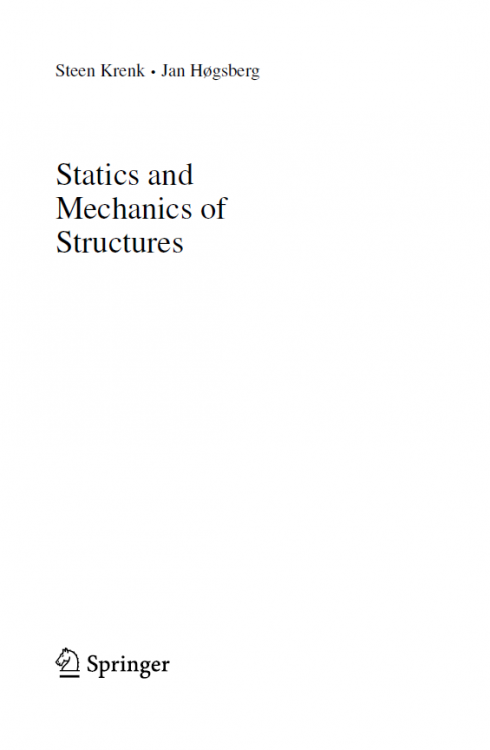Kami menggunakan cookies untuk membuat pengalaman Anda lebih baik. Untuk mematuhi petunjuk e-Pribadi yang baru, kami perlu meminta persetujuan Anda untuk menyetel cookies. Pelajari lebih lanjut .
Statics and Mechanics of Structures
The theory of statics of structures has developed from intuition via gradual refinement to its current state, where the basic principles are put into a systematic framework that enables precise analysis. Although the basic laws governing statics of structures have been known for several centuries, the methods of analysis have developed considerably over the last decades. At the current state of this development an introductory book on statics should aim at the dual goal of providing sufficient background for developing an intuitive understanding of structures, and at the same time lay a solid foundation for modern analysis, typically made by computational techniques.
- Baca | Unduh PDF
- Statics and Mechanics of Structures
The theory of statics of structures has developed from intuition via gradual refinement to its current state, where the basic principles are put into a systematic framework that enables precise analysis. Although the basic laws governing statics of structures have been known for several centuries, the methods of analysis have developed considerably over the last decades. At the current state of this development an introductory book on statics should aim at the dual goal of providing sufficient background for developing an intuitive understanding of structures, and at the same time lay a solid foundation for modern analysis, typically made by computational techniques.
In this vein the present book makes extensive use of simple but realistic examples to develop familiarity and understanding of how structures carry and distribute the loads through the structural members to the supports. This is then supplemented by a few simple computer programs that illustrate, how the theories for trusses and frames are implemented, and open up to a more general approach to computational mechanics as a natural extension of the present book.

